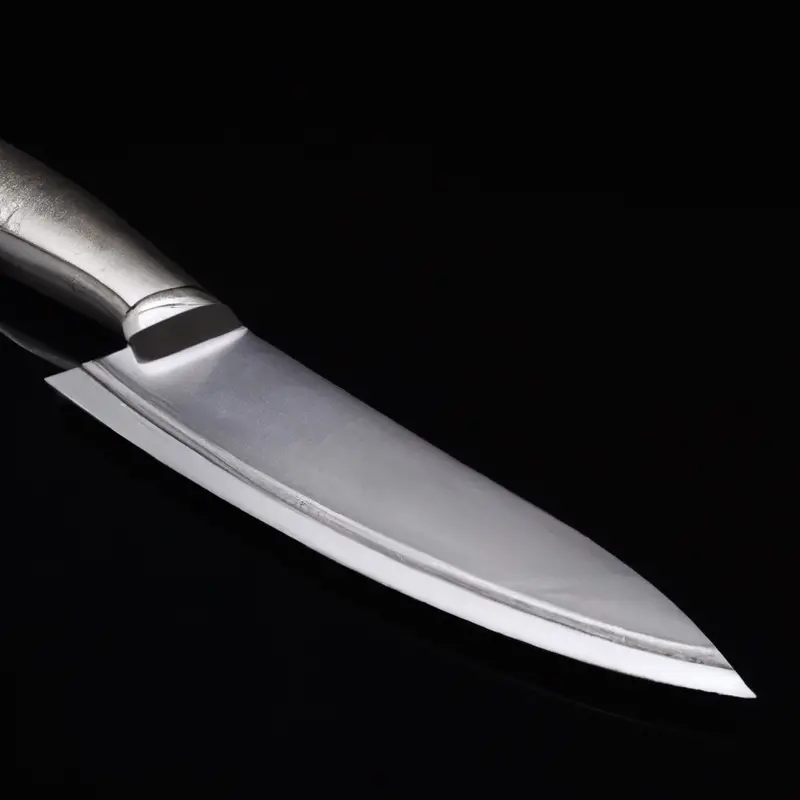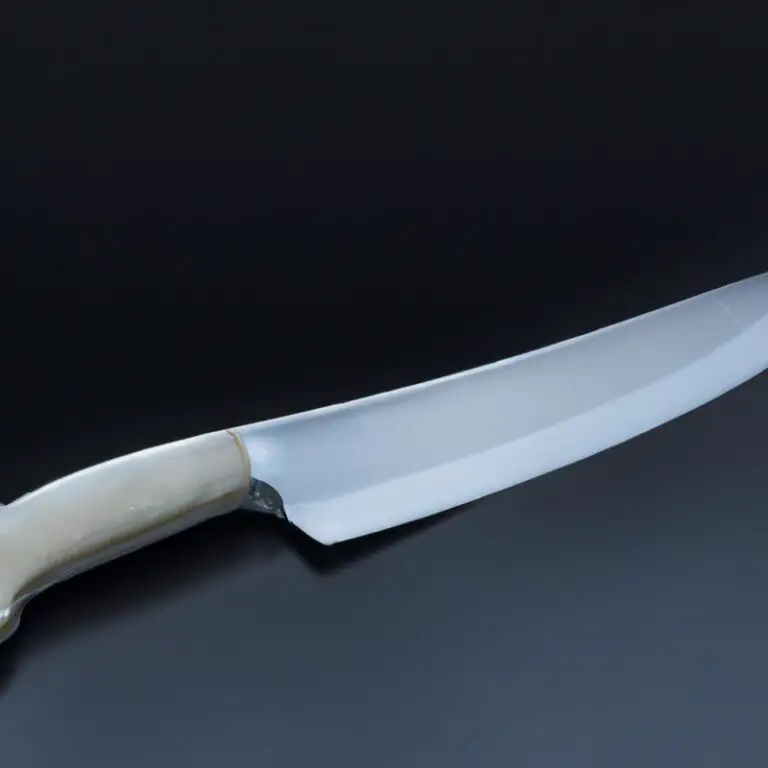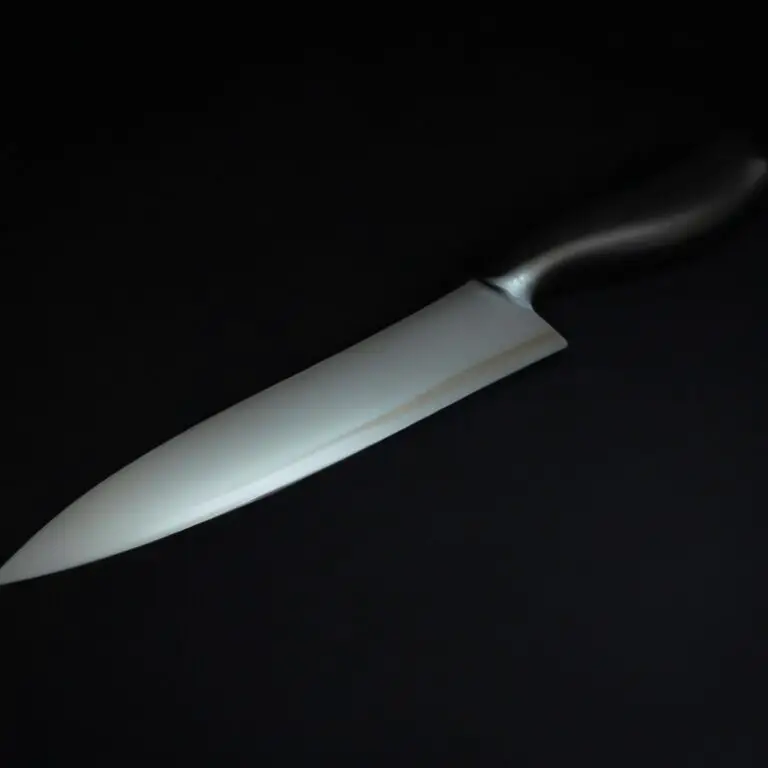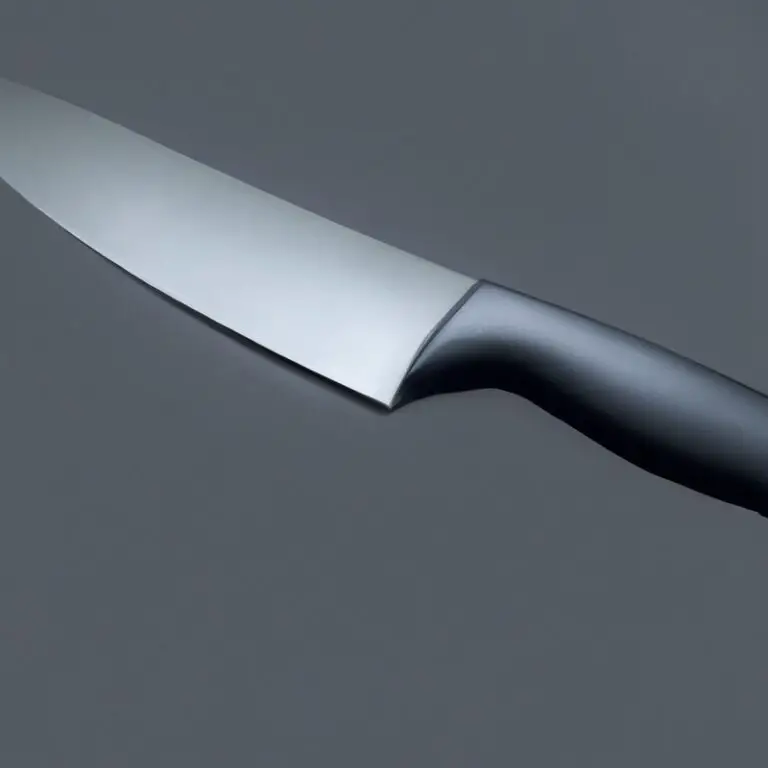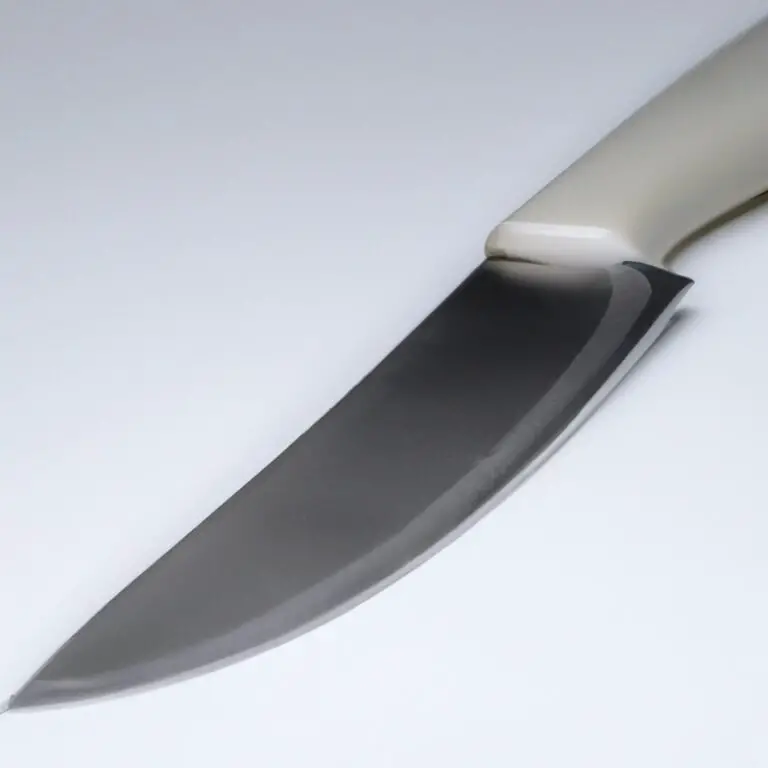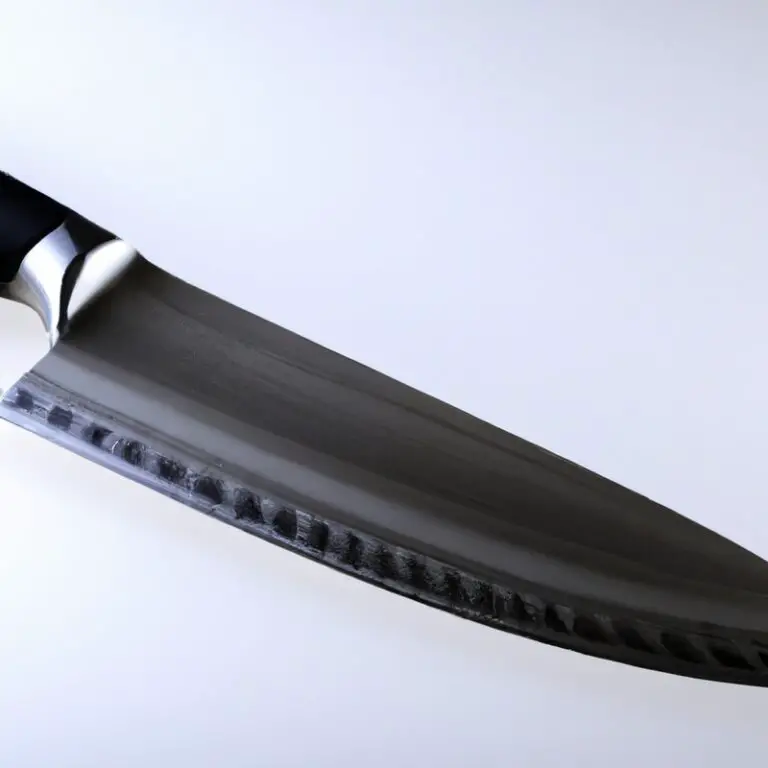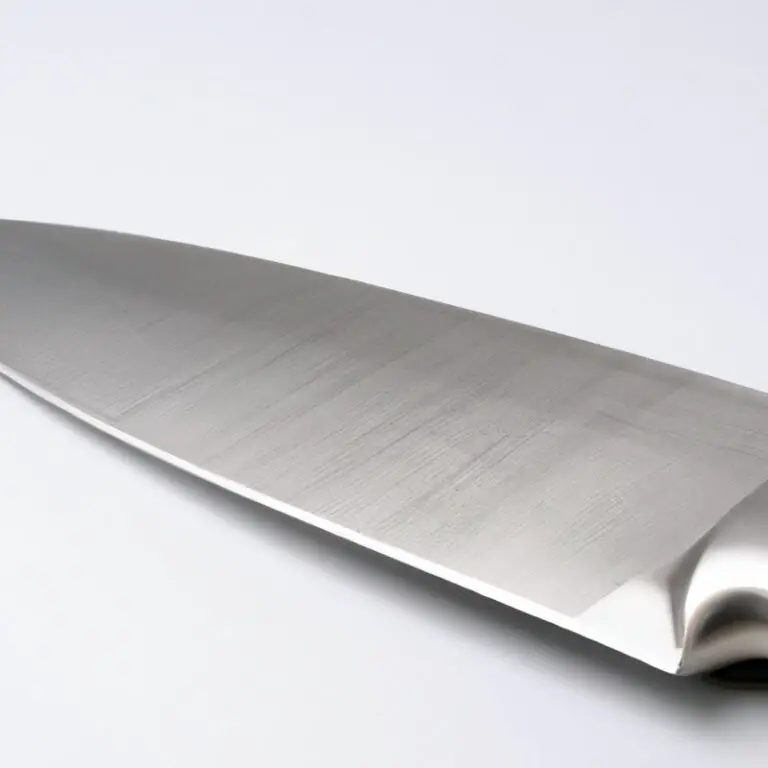Can You Use a Santoku Knife For Cutting Fruits? Here’s Why It’s a Game-Changer!
Key Takeaways:
- A Santoku knife is a versatile kitchen tool that can be used for a variety of cutting tasks, including cutting fruits.
- The unique design of a Santoku knife, with its wider blade and flatter edge, makes it an ideal choice for slicing through soft or delicate fruits with ease.
- When using a Santoku knife to cut fruits, it’s important to ensure that the blade is sharp and that you have a firm grip on the handle to prevent accidents.
- With its precision and efficiency, a Santoku knife can make a valuable addition to any kitchen, whether you’re cooking up a storm or just looking to slice a few apples for a healthy snack.
Are you looking for a versatile kitchen tool that can handle a variety of tasks, including fruit cutting? Look no further than the Santoku knife.
As a professional chef with years of experience, I believe that the Santoku knife shines when it comes to slicing and chopping fruits.
However, there are some pros and cons to using this knife for fruit cutting, and sharpening and maintenance are crucial for optimal performance. In this article, I’ll share my insights on using Santoku knives for cutting fruits, provide tips and techniques for best results and help you choose the best Santoku knife for your needs.
| Santoku Knife | Cutting Fruits |
|---|---|
| Blade Length | Between 5-7 inches, which is suitable for most fruits |
| Blade Shape | Flat edge with a curved tip, not ideal for slicing through tough skins or rinds |
| Blade Material | Typically made from high-carbon stainless steel or Damascus steel, which can resist rusting and stains |
| Sharpness | Sharp enough to make precise cuts through most fruits |
| Weight | Lightweight, which allows for better control and maneuverability when cutting fruits |
| Usage | Ideal for precise cutting tasks, such as dicing and mincing fruits, but not recommended for slicing through tough skins or rinds |
What is a Santoku knife and how does it differ from other knives?
A Santoku knife is a multipurpose kitchen knife originally from Japan. Santoku, which means “three virtues” or “three uses,” refers to its ability to chop, slice, and dice.
It has a shorter and wider blade than a traditional chef’s knife, and its blade is thinner and lighter, making it ideal for precise cuts and quick chopping.
The knife’s flat blade and curved edge allow for a rocking motion when slicing, which is different from a straight-edge blade like a chef’s knife. The Santoku knife is different from other knives due to its versatility, size, and unique blade design.
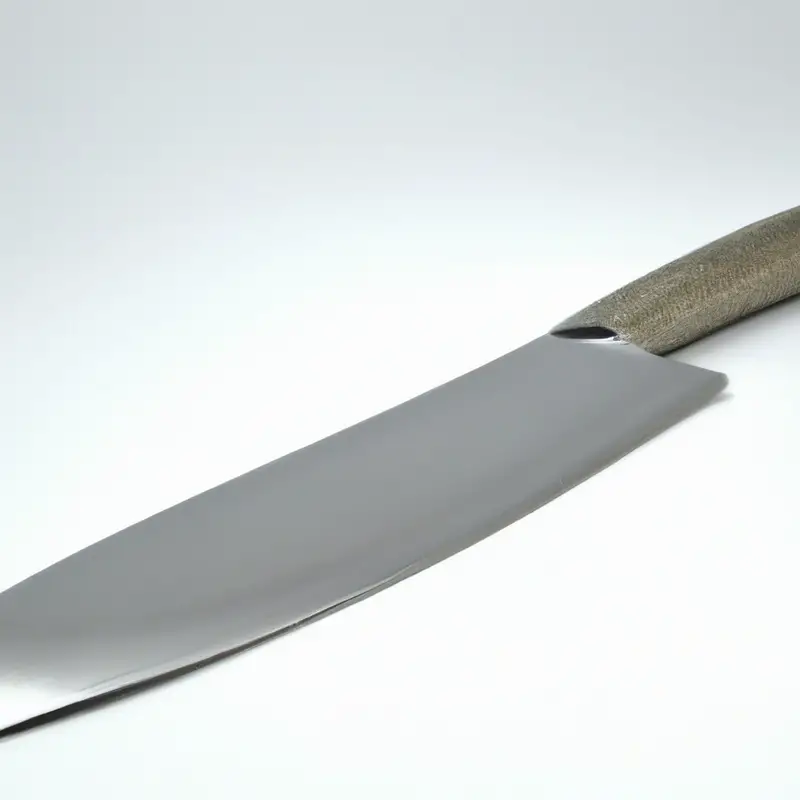
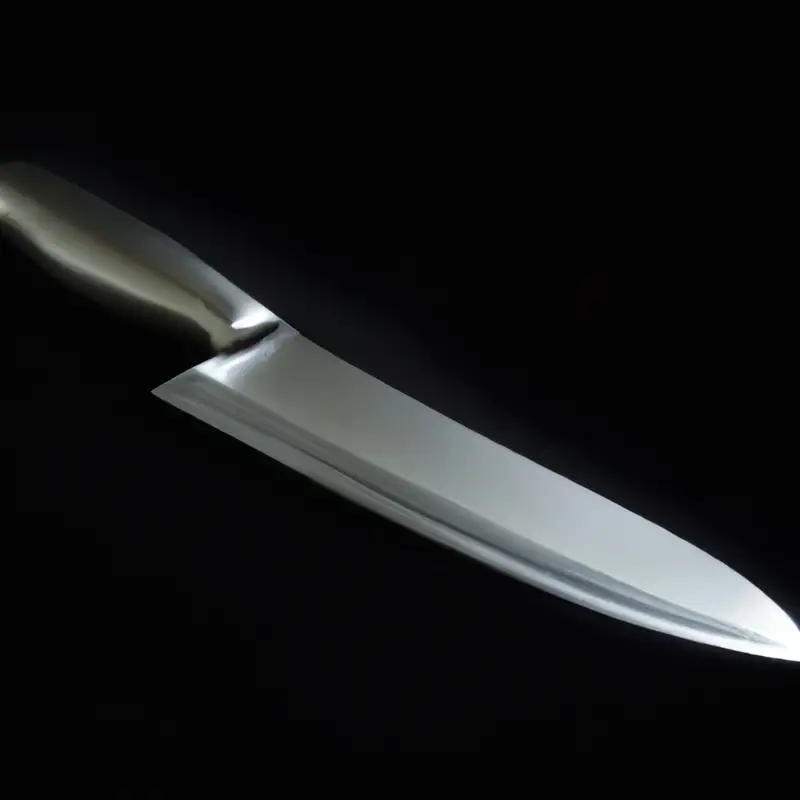
Understanding the anatomy of a Santoku knife: features that make it a versatile kitchen tool
The Santoku knife is a versatile kitchen tool that originated in Japan and is now popular worldwide. It is designed to be an all-purpose knife for slicing, dicing, and mincing vegetables, meat, and fish.
The word “Santoku” means “three virtues,” referring to its ability to perform three main tasks, namely slicing, dicing, and chopping.
The knife features a straight edge that is slightly curved upward at the tip, which makes it suitable for rocking motion cuts. It has a wide blade that measures between 5 and 7 inches, which is shorter than a typical chef’s knife but longer than a paring knife.
The blade has a narrow spine that widens toward the edge, which helps in reducing friction and keeping the food from sticking to the blade.
Santoku knives also have a Granton edge or a row of hollowed-out ovals along the blade’s side, which allows air to flow underneath the blade. This feature helps prevent food from sticking to the blade and enables thin slices to fall away effortlessly.
Another unique feature of the Santoku knife is its handle.
It has a lightweight handle that is traditionally made of wood, allowing for precision and control when cutting. Some modern versions have synthetic or composite handles, making them more durable and dishwasher-safe.
Overall, the Santoku knife’s unique features make it an excellent all-purpose kitchen tool for slicing, dicing, and chopping fruits, vegetables, meat, and fish.
Its versatility, combined with its comfortable handle and precision blade, makes it a popular choice among home cooks and professional chefs alike.
Can a Santoku knife be used for cutting fruits? A professional chef’s perspective
Yes, a Santoku knife can be used for cutting fruits according to professional chefs. The unique design of the Santoku knife, featuring a long, thin blade with a deep curve and a sharp, pointed tip, makes it a versatile tool for slicing and chopping a wide range of fruits.
Its straight edge allows for clean, precise cuts, while its lightweight construction makes it easy to maneuver.
However, it is important to note that there are some drawbacks to using a Santoku knife for fruits. The deep curve of the blade may make it difficult to cut through thicker-skinned fruits like pineapple, and its pointed tip may not be ideal for coring or hulling fruits.
Nonetheless, with proper technique and skill, a Santoku knife can be a useful tool for cutting fruits in the kitchen.
Pros and cons of using a Santoku knife for cutting fruits
Pros and cons of using a Santoku knife for cutting fruits: Pros:
- A Santoku knife’s flat edge makes it precise for cutting large fruits like watermelon, cantaloupe, and pineapple.
- The Granton edge helps the food slip off the blade smoothly, providing clean cuts.
- The unique shape and design of the Santoku knife make it versatile for both chopping and slicing soft fruits like tomatoes and mangoes.
- It is lightweight and easy to use, reducing the risk of wrist fatigue during prolonged use.
Cons:
- The sharp, narrow blade may not be suitable for cutting fruits with harder exteriors like coconuts and pumpkins.
- The knife’s broad tip may make it difficult to maneuver around curved or uneven surfaces on fruits.
- Traditional Santoku knives may not have a serrated edge, making it difficult to cut through citrus fruits with tough skins.
- Improper maintenance and sharpening may dull the blade, reducing its effectiveness in cutting fruits.
While Santoku knives are versatile in the kitchen and great for cutting a variety of ingredients, it is essential to consider their limitations when working with fruits. Ensure proper sharpening and maintenance to keep the blade in optimal condition.
If cutting harder fruits with thicker skins and irregular surfaces, consider alternative kitchen knives with sharper tips and serrated edges.
How to use a Santoku knife for slicing and chopping fruits: tips and techniques
To use a Santoku knife for slicing and chopping fruits, start by selecting the appropriate size and weight of the knife that fits your hand comfortably. Hold the handle with a relaxed grip, and use the blade’s flat part for slicing fruits.
For chopping fruits, use the tip, and follow through with a rocking motion to get even slices.
Make sure to keep your fingers and thumb away from the blade to avoid injury. For larger fruits like watermelon, use a back and forth motion to cut through the flesh.
Always use a clean cutting board and a sharp knife to ensure a smooth cut.
Lastly, rinse the blade with warm water and dry it with a clean towel after use. With these tips, you can use a Santoku knife to cut your favorite fruits with ease.
The importance of proper sharpening and maintenance for using Santoku knife with fruits
Proper sharpening and maintenance are crucial for using a Santoku knife with fruits. A dull blade can lead to uneven cuts and damage to the fruit’s integrity.
Blunt knives also increase the risk of accidents while cutting, making it challenging to obtain smooth and precise slices.
To maintain a sharp edge, regularly hone the blade with a honing rod before and after each use. Also, sharpen the knife using a whetstone or an electric sharpener every few weeks or whenever the blade starts to feel dull.
When washing the knife, always use mild soap, warm water, and a non-abrasive scrubber.
After washing, dry the knife immediately and store it in a knife block or a magnetic knife holder to prevent damage to the blade’s edge. Ignoring proper sharpening and maintenance can lead to costly repairs or even replacement of the knife.
Hence, investing time and effort in sharpening and maintaining the knife is crucial, especially when working with delicate fruits that require precision cuts.
Recommended Santoku knives for cutting fruits: product reviews and comparisons
Recommended Santoku Knives for Cutting Fruits: Product Reviews and Comparisons
- Wusthof Classic 7-Inch Santoku Knife: This German-made knife is forged from high-carbon stainless steel and has a full tang for added strength and balance. Its Granton edge helps prevent sticking, making it great for cutting softer fruits like strawberries and bananas.
- Mercer Culinary Genesis 7-Inch Forged Santoku Knife: This knife features a comfortable, ergonomic handle and a non-slip grip for precision cutting. Its taper-ground edge allows for added sharpness and easy maintenance.
- Shun Classic 7-Inch Santoku Knife: This Japanese knife has a VG-MAX steel blade that is razor-sharp and strong. Its D-shaped handle provides a comfortable grip and better control during use.
- Global G-48 7-inch Hollow Ground Santoku Knife: This knife is crafted from high-quality stainless steel and features a unique, hollow-ground design that helps prevent food from sticking to the blade. Its lightweight construction and comfortable handle make it great for slicing delicate fruits like kiwi and mango.
- Mac Knife Superior Santoku Knife: This Japanese-made knife is lightweight and balanced, making it easy to maneuver. Its thin blade is ideal for precise slicing and chopping of soft fruits like peaches and plums.
When choosing a Santoku knife for cutting fruits, it’s important to consider the blade’s sharpness, flexibility, and size. Look for a knife with a comfortable grip that feels balanced in your hand, and be sure to maintain its sharpness with regular honing and sharpening.
With the right Santoku knife, you’ll be able to easily slice and chop a variety of fruits with precision and ease.
Using Santoku knives for specific fruits: pineapple, melon, oranges, and more
Santoku knives can be an excellent choice for slicing and chopping various fruits. With its lightweight build and sharp blade, it cuts through soft or tough fruit skins with ease.
For instance, the narrow tip can be ideal for carving out pineapple eyes while the wider blade can handle larger fruits like melons.
When it comes to citrus fruits like oranges, Santoku knives work well for segmenting and peeling them. However, it’s important to note that some round fruits like apples may require a dedicated paring knife.
Ultimately, the key is to choose the right size and shape of Santoku knife for the specific fruit you intend to cut.
How to choose the best Santoku knife for cutting fruits: factors to consider before buying
When choosing a Santoku knife for cutting fruits, there are several factors to consider.
- Blade Material: Look for blades made from high-carbon stainless steel or Damascus steel for durability and precision cutting.
- Blade length: While 5-7 inch blades are preferred for cutting fruits, consider the size of the fruits you are cutting and your personal preferences.
- Blade Thickness: Thicker blades are suitable for tough fruits like pineapple, while thinner blades are better for softer fruits like strawberries.
- Handle Material: Choose handles that provide a comfortable and firm grip. Handles made of wood, plastic, or composite materials are all good options.
- Weight: Lightweight knives are easier to handle and require less effort to use. Heavier knives may require more control and precision but can be more tiring.
- Brand and Price: Choose a reputable brand that offers a warranty or return policy. Prices can vary significantly, but a good Santoku knife for cutting fruits usually falls in the $50-$200 range.
By considering these factors, you can choose the best Santoku knife for cutting fruits that meets all your needs and preferences.
Alternatives to Santoku knives for cutting fruits: when to consider other kitchen knives
While Santoku knives are designed to slice and chop fruits effectively, there may be instances where alternative knives may be more suitable for the task. For example, a serrated knife is ideal for cutting softer, more delicate fruits such as tomatoes and peaches, and a paring knife is perfect for precise cuts for smaller fruits like berries and grapes.
A chef’s knife may also be an alternative for larger and tougher fruits such as pineapples or watermelons.
Ultimately, it is essential to consider the type of fruit you are cutting and choose the knife that will give you the most precision and control for a smooth and effective cut.
Final Verdict
A Santoku knife is a versatile tool that can be used for cutting a variety of fruits. Its unique design and features make it a popular choice amongst professional chefs and home cooks alike.
However, it’s important to note that a Santoku knife may not be suitable for cutting all types of fruits, and proper care and maintenance is crucial for optimal performance.
By following the tips and techniques outlined in this article, you can use a Santoku knife to slice and chop fruits with ease and precision. When choosing a Santoku knife for cutting fruits, consider factors such as blade length, material, and handle design.
Ultimately, the best knife for you is one that feels comfortable and fits your specific needs.
Remember to invest in a high-quality knife that will last you for years to come. Happy fruit cutting!

